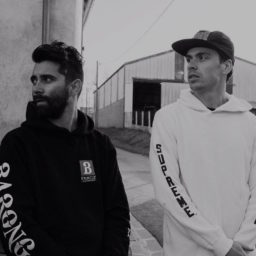Repeating the same question over and over to cut through the nonsense and set the right priorities.
I regularly discuss digital strategy with bloggers, DIY musicians, managers or people running their own record label. My intention is to help people think more like startups, set clear goals, collect data and know how to act on data. There are useful frameworks for this, like the AARRR framework, but they take a while to get acquainted with.
Even in quick conversations, I want to give people something useful, uncomplicated. You’re not going to be able to go through an entire framework with sets of metrics. When constructing narratives for brands, it helps to ask the question why? over and over. In digital strategy, this question is:
And then?
These two words won’t help you determine what to do, but they will help you validate your actions and uncover tasks that might need to be completed before acting. An example:
A Buddhist rapper, let’s call him Jimi Zendrix, desires to sell more merchandise. He knows that to do that, he needs to build a bond with his fans. He has the perfect solution: a newsletter.
And then?
Jimi: then I’m going to share what I’m doing with my fans.
And then?
Jimi: then they’re going to feel more engaged.
And then?
Jimi: then I’ll develop merch and link to it from my newsletter.
And then?
Jimi: then people are going to go there and buy the merch.
Each one of these answers reveals a set of tasks and extra questions.
- How are you going to share what you’re doing with fans? Do you have time to prepare that every week? Are there easy ways to aggregate your social feeds like Instagram? Or do you need to use a different newsletter service for that?
- How do you know that people feel more engaged? This means you have to make assumptions, before launching your newsletter, about open rates and click rates of fans. If they’re really more engaged, you should also see it in the data in other places, so you need to have a way to track that.
- How will you develop this merch? Can you use the data from your newsletter and other sources to develop better products? What’s the best way to display merch in mailinglists?
- Can you track sales from when someone opens the email, clicks the link, looks around the site, to purchase? Are you using a merch shop that allows you to understand this and lets you optimize? For example, you may find that newsletter readers are more likely to buy hats. You may want to show hats first to people who click through from your newsletter, but not to normal visitors.
Loads of stuff to consider before launching your newsletter. Don’t overwhelm yourself: the lesson is what’s most important. Pick something you want to do, make an assumption, then test it. Repeat.
And then there’s fallacies…
“And then?” doubles for “so what?” We often obsess with numbers called ‘vanity metrics’, which are kind of pointless to focus on.
Try to imagine an answer for these:
- I want 5,000 likes on Facebook. And then?
- I want to have 1,000 visitors on my homepage. And then?
- I want my tweets to be retweeted more. And then?
Your answers likely contain a hypothesis. You may think that getting more retweets leads to more followers leads to more fans leads to more sales. Now you have something to measure.
- Do retweets lead to more followers? You may want to exclude spam accounts, or accounts that follow tens of thousands of users.
- Do followers lead to more fans? How will you be able to tell?
- Do those people who stumble upon your tweets eventually convert to paying customers?
Each of these have conversion ratios. So you go from a number to a much smaller number at the end. You may determine, before even getting started, that it’s not worth your time to research hashtags and write tweets that aren’t even directly related to your music, just to get retweets.
“And then?” helps you cut through the bullshit and get your priorities straight. Don’t spend too much time on things you can’t measure or that are not part of a funnel.
Each step in your digital strategy needs to lead somewhere.
Don’t stop asking “and then?”









